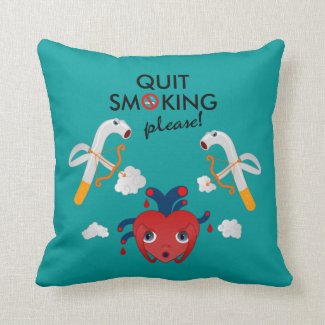Secondhand smoke: why so dangerous?
The smoke released from the burning end of a cigarette pipe, cigar, bidi, or kretek or that seeps from the mouthpiece of one of these products is called mainstream smoke. Sidestream smoke is the one exhaled by the smoker. Secondhand smoke it’s a mixture of both. And it’s dangerous for several reasons.
It contains many of the same chemicals that are present in the smoke inhaled by smokers. At least 250 chemicals in secondhand smoke are known to be toxic or carcinogenic (cancer-causing). People’s exposure to secondhand smoke happens in homes, workplaces, vehicles, and in public areas such as restaurants, bars, bowling alleys, and casinos. In many countries, smoking in public areas it’s prohibited.
Smoke-free rules in homes and vehicles substantially reduce secondhand smoke exposure among children and nonsmoking adults but do not totally eliminate their exposure. Harmful residues from secondhand smoke may be present in areas where no one is currently smoking. Now, this was something new to me. Never thought that secondhand smoke could presence could be so persistent. It may enter the house in the air, on dust particles, or on the smoker’s breath or clothing. Moreover heating, ventilating and air conditioning system can distribute secondhand smoke throughout a building. As today many people live in buildings or apartments sometimes the air is shared among people. And so does passive smoking for households of nonsmokers. Ventilation systems cannot remove secondhand smoke from indoor environments. Conventional air cleaning systems can remove large particles in secondhand smoke, but they cannot effectively eliminate smaller particles and gases.
And as you might already know exposure to secondhand smoke is associated with an increased risk of lung cancer and heart disease in nonsmoking adults, and it increases the risk of sudden infant death syndrome, bronchitis, pneumonia, and other serious respiratory conditions in children. So we should not underestimate secondhand smoke presence.
It contains many of the same chemicals that are present in the smoke inhaled by smokers. At least 250 chemicals in secondhand smoke are known to be toxic or carcinogenic (cancer-causing). People’s exposure to secondhand smoke happens in homes, workplaces, vehicles, and in public areas such as restaurants, bars, bowling alleys, and casinos. In many countries, smoking in public areas it’s prohibited.
Smoke-free rules in homes and vehicles substantially reduce secondhand smoke exposure among children and nonsmoking adults but do not totally eliminate their exposure. Harmful residues from secondhand smoke may be present in areas where no one is currently smoking. Now, this was something new to me. Never thought that secondhand smoke could presence could be so persistent. It may enter the house in the air, on dust particles, or on the smoker’s breath or clothing. Moreover heating, ventilating and air conditioning system can distribute secondhand smoke throughout a building. As today many people live in buildings or apartments sometimes the air is shared among people. And so does passive smoking for households of nonsmokers. Ventilation systems cannot remove secondhand smoke from indoor environments. Conventional air cleaning systems can remove large particles in secondhand smoke, but they cannot effectively eliminate smaller particles and gases.
And as you might already know exposure to secondhand smoke is associated with an increased risk of lung cancer and heart disease in nonsmoking adults, and it increases the risk of sudden infant death syndrome, bronchitis, pneumonia, and other serious respiratory conditions in children. So we should not underestimate secondhand smoke presence.


Comments
Post a Comment
Thank you very much for visiting A Portuguese Love. Come back soon!